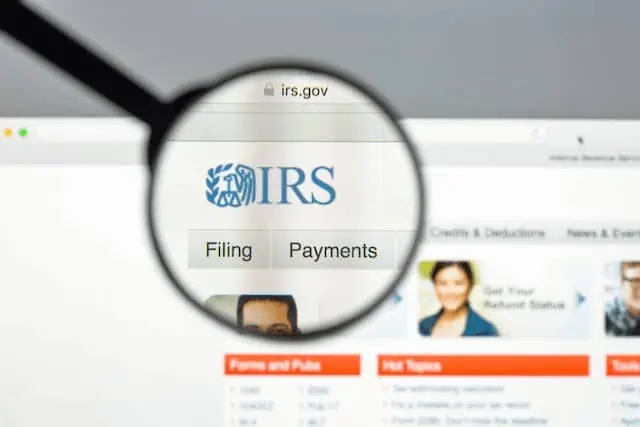The earned income tax credit (EITC) is an important tax break for low- to moderate-income workers. Depending on your filing status and number of qualifying children, you might be eligible for the credit on your 2023 federal tax return (the tax return you’ll file this year) if your income is under $63,398 ($66,819 for 2024).
The credit amount can be significant, too. For workers with qualifying children, the 2023 earned income credit can be worth up to $7,430 ($7,830 for 2024). If you don’t have children, the maximum credit amount drops to $600 ($632 for 2024)—but, hey, that’s still way better than nothing. The credit is also fully refundable, so you won’t lose any of it if the tax you otherwise owe is less than the amount of the credit.
There are a lot of requirements and limitations, though. For example, in addition to income limits, there are age restrictions, investment income caps, residency requirements, and other hurdles to clear. As a result, many people don’t realize they qualify for the earned income credit, and therefore don’t claim it—about 20% of eligible taxpayers, by IRS estimates.
That’s crazy! If you have a job with a modest salary, you can’t afford to miss the tax savings the earned income tax credit offers. Yes, the credit can be tricky, but I’ll run you through the basics to help you understand what it’s all about. Once you’re more familiar with the details, there’s no excuse for failing to claim this valuable tax break if you qualify.
Related: What’s Your Standard Deduction?
Who’s Eligible for the Earned Income Tax Credit

There are a lot of eligibility requirements for the earned income tax credit, but most of them are fairly straightforward. In addition, some requirements apply to everyone, while others depend on whether or not you have children. Read on for details of the various eligibility requirements.
YATI Tip: While not discussed here, there are also special rules for military personnel and members of the clergy.
Eligibility: Earned Income Requirement
As you might guess from the credit’s name, you must have “earned income” to claim the earned income tax credit. If you’re married and file a joint return, just one spouse needs earned income to satisfy this requirement.
For employees, earned income includes all the taxable income you get from your employer, such as wages, salary, and tips. Nontaxable employee pay—like certain childcare or adoption benefits—doesn’t count (although there’s an exception for nontaxable combat pay).
If you’re self-employed, net earnings from your business are also treated as earned income. Just remember that you must claim all your allowable business expenses when calculating your net earnings from self-employment.
YATI Tip: If you have at least $400 in net earnings from self-employment, make sure you complete Schedule SE (Form 1040) and pay any self-employment tax due. If you don’t, you might not get your full earned income credit.
Gross income received by an independent contractor treated as a “statutory employee” also counts as earned income. (If you’re a statutory employee, you’ll receive a W-2 form with the “Statutory employee” box checked.)
Disability retirement payments are considered earned income until you reach the minimum retirement age. (Although payments from a disability insurance policy that you paid the premiums for aren’t earned income, regardless of your age.)
What’s not considered earned income?
- Interest and dividends
- Pensions and annuities
- Social Security and railroad retirement benefits
- Alimony and child support
- Welfare benefits
- Workers’ compensation
- Unemployment compensation
- Nontaxable foster care payments
- Veterans’ benefits
- Other similar payments
Related: What Tax Bracket Are You In?
Eligibility: Earned Income Limits for 2023
You can have too much earned income, though. For the 2023 tax year, you don’t qualify for the earned income credit if your earned income exceeds the limits in the earned income credit table below.
YATI Tip: Tax returns for the 2023 tax year are due April 15, 2024, for most people (April 17 for residents of Maine and Massachusetts).
| Number of Children | 2023 Filing Status: Single, Head of Household, Surviving Spouse, Married Filing Separately | 2023 Filing Status: Married Filing Jointly |
|---|---|---|
| 0 | $17,640 | $24,210 |
| 1 | $46,560 | $53,120 |
| 2 | $52,918 | $59,478 |
| 3 or more | $56,838 | $63,398 |
Eligibility: Earned Income Limits for 2024
The earned income limits are adjusted annually to factor in inflation.
If you’re looking ahead to your 2024 return (which you’ll file in 2025), here are the earned income limits for the 2024 tax year.
| Number of Children | 2024 Filing Status: Single, Head of Household, Surviving Spouse, Married Filing Separately | 2024 Filing Status: Married Filing Jointly |
|---|---|---|
| 0 | $18,591 | $25,511 |
| 1 | $49,084 | $56,004 |
| 2 | $55,768 | $62,688 |
| 3 or more | $59,899 | $66,819 |
Eligibility: Adjusted Gross Income Limit
There’s also a cap on your adjusted gross income (AGI). However, the maximum AGI amounts are the same as the earned income limits in the tables above.
That makes sense for people who only have income from their job, since earned income and AGI are the same in that situation. However, for people with other types of income—such as investment income, IRA or 401(k) or distributions, taxable Social Security benefits, or other “unearned” income—the maximum AGI amounts are actually a separate limitation that must be satisfied.
Eligibility: Investment Income Cap
The earned income tax credit is for working-class Americans—not for people who live off income from investments. As a result, you can’t claim the credit if you have too much investment income.
For the 2023 tax year, you can’t claim the earned income credit if you have more than $11,000 of investment income ($11,600 for 2024). For this purpose, investment income includes interest, ordinary dividends, capital gains, royalties and rental income from personal property, and income from passive activities.
Related: Capital Gains Tax: What Is It, Rates, Home Sales + More
Eligibility: Social Security Number Requirement
You (and your spouse, if you’re married filing jointly) must also have a valid Social Security number by the due date of your tax return to claim the earned income credit. All qualifying children that increase the amount of the credit also must have valid Social Security numbers.
A Social Security number is not valid for earned income credit purposes if it was issued solely to apply for or receive a federally funded benefit (e.g., Medicaid) and doesn’t authorize you to work in the U.S.
If you have at least one qualifying child, but he or she doesn’t have a Social Security number, you still might be able to claim a “childless” earned income credit.
Eligibility: Joint Return Requirement
Generally, married couples must file a joint return to claim the earned income tax credit.
However, under a special rule, you still might be able to claim the credit if your filing status is married filing separately. To claim the credit if you’re married filing separately, you must have a qualifying child who lived with you for more than half of the tax year, and either of the following must apply:
- You lived apart from your spouse for the last six months of the tax year.
- You’re legally separated under a written agreement or decree and you didn’t live in the same household as your spouse at the end of the tax year.
Make sure you file Schedule EIC (Form 1040) and check the applicable box at the top of the form if you meet the requirements for a separated spouse.
Eligibility: Citizenship Requirements
You generally must be a U.S. citizen or resident alien for the entire tax year to claim the earned income credit. However, if you were a nonresident alien for any part of the year, you can still claim the credit if you’re married, your spouse is a U.S. citizen or resident alien, you choose to be treated as a U.S. resident, and you file a joint return.
Eligibility: Foreign Earned Income Restriction
The final rule that applies to everyone impacts taxpayers with foreign earned income. You don’t qualify for the earned income tax credit if you file Form 2555 to exclude income earned in a foreign country from your gross income, or to deduct or exclude a foreign housing amount.
Who Is a “Qualifying Child” for EITC Purposes?

As noted earlier, the amount of your earned income credit will be higher if you have qualifying children. But not every child is a “qualifying child” for purposes of the credit. To satisfy that requirement, the child must pass the following four tests:
- Relationship test
- Age test
- Residency test
- Joint return test
(I’ll cover each test in a minute.)
In addition, a qualifying child can’t be used by more than one person to claim the earned income credit. You can’t be claimed as a qualifying child of another person’s tax return, either.
YATI Tip: You must attach Schedule EIC (Form 1040) to your return if you claim the credit and have any qualifying children.
Qualifying Child: Relationship Test
A qualifying child must be your son, daughter, stepchild, foster child, brother, sister, stepbrother, stepsister, half brother, half sister, or a descendant of any of them (e.g., your grandchild, niece, or nephew).
An adopted child is treated as your own child.
Qualifying Child: Age Test
At the end of the tax year, a qualifying child must be either:
- 18 years old or younger, and younger than you (or your spouse if filing jointly)
- 23 years old or younger, a full-time student, and younger than you (or your spouse if filing jointly)
- Permanently and totally disabled at any point during the tax year, regardless of age
Qualifying Child: Residency Test
The qualifying child must have lived with you in the U.S for more than half of the tax year.
Qualifying Child: Joint Return Test
A qualifying child can’t file a joint return for the tax year, unless a joint return is filed for the sole purpose of claiming a refund of withheld income taxes or previously paid estimated taxes.
What If You Don’t Have a Qualifying Child?
If you don’t have children, you can still claim the earned income credit if you:
- Are 25 to 64 years old at the end of the tax year (if you’re married and filing a joint return, either you or your spouse must be within this age range)
- Can’t be claimed as a dependent on someone else’s tax return
- Can’t be a qualifying child of another person
- Lived in the U.S more than half of the tax year
Related: 11 Education Tax Credits and Deductions
How Much Is the Earned Income Tax Credit?

The earned income tax credit can be worth a lot of money! The exact amount depends on your income, filing status, and the number of qualifying children.
The credit is also gradually phased out (i.e., reduced to zero) if your AGI is above a certain amount. As a result, the credit range can vary dramatically, too.
EITC Phase-Out Ranges and Amounts for the 2023 Tax Year
For the 2023 tax year, the phase-out ranges and credit amount ranges are shown in the table below.
As you can see, the credit potential is highest if you have three or more qualifying children.
| Number of Qualifying Children | 2023 AGI Phase-Out Range: Single, Head of Household, Surviving Spouse, Married Filing Separately | 2023 AGI Phase-Out Range: Married Filing Jointly | 2023 Credit Amount Range |
|---|---|---|---|
| 0 | $9,800 to $17,640 | $16,370 to $24,210 | $2 to $600 |
| 1 | $21,560 to $46,560 | $28,120 to $53,120 | $9 to $3,995 |
| 2 | $21,560 to $52,918 | $28,120 to $59,478 | $10 to $6,604 |
| 3 or more | $21,560 to $56,838 | $28,120 to $63,398 | $11 to $7,430 |
EITC Phase-Out Ranges and Amounts for the 2024 Tax Year
As with the earned income limits provided earlier, the phase-out ranges and credit amounts are adjusted each year to account for inflation.
So, here are the ranges and amounts for the 2024 tax year if you’re already starting to think about your 2024 return (which is smart!).
| Number of Qualifying Children | 2024 AGI Phase-Out Range: Single, Head of Household, Surviving Spouse, Married Filing Separately | 2024 AGI Phase-Out Range: Married Filing Jointly | 2024 Credit Amount Range |
|---|---|---|---|
| 0 | $10,330 to $18,591 | $17,250 to $25,511 | $2 to $632 |
| 1 | $22,720 to $49,084 | $29,640 to $56,004 | $9 to $4,213 |
| 2 | $22,720 to $55,768 | $29,640 to $62,688 | $10 to $6,960 |
| 3 or more | $22,720 to $59,899 | $29,640 to $66,819 | $11 to $7,830 |
Calculating the Earned Income Credit
Here’s some good news: The IRS will calculate the amount of your earned income tax credit if you want them to. For 2023 returns, just write “EIC” on the dotted line next to Line 27 and the IRS will take it from there. Don’t forget to enter any nontaxable combat pay you want to include in earned income on Line 1i and attach a Schedule EIC tax form if you have any qualifying children.
If you want to figure the credit amount yourself, use the worksheets and earned income tax credit tables in the instructions for Form 1040. Most people will use Worksheet A, but you must use Worksheet B if you were self-employed at any time during the tax year, a member of the clergy, a church employee who files Schedule SE, or a statutory employee filing Schedule C.
YATI Tip: If you’re using tax software like TurboTax or H&R Block, the program will calculate your credit for you. If you’re looking for the right tax software for you, check out our review of the best tax software products available—some options even allow you to claim the credit for free.
Is the Earned Income Tax Credit Refundable?

There are two basic types of tax credits: non-refundable and refundable credits. The earned income credit is a “refundable” credit. That means it can reduce the tax you owe below $0 and trigger a tax refund. For example, if you owe $1,000 in tax and qualify for a $1,200 refundable credit, you’ll get a $200 tax refund.
On the other hand, with a non-refundable tax credit, the best it can do is reduce your tax to $0. As a result, if a non-refundable credit is worth more than the tax you owe before the credit is applied, you end up losing part of the credit. For instance, if you owe $1,000 in tax and qualify for a $1,200 non-refundable credit, you won’t owe any tax but you won’t get a tax refund.
Delayed Tax Refunds
Speaking of tax refunds … criminals frequently use the earned income tax credit to generate fraudulent tax refunds. To help combat this practice, the IRS is prevented by law from issuing a refund until mid-February if the credit is claimed on the return. This applies to the entire refund, not just the portion associated with the earned income credit.
According to the IRS, most EITC-related refunds for the 2023 tax year will be available in bank accounts or on debit cards by February 27, 2024, for taxpayers who chose direct deposit for their refunds (assuming there are no other issues with their tax return).
What If Your Earned Income Tax Credit Is Denied?

There are a number of reasons why your earned income tax credit could be rejected. The most common reason is that one or more children you claimed don’t qualify, but the credit is also often denied because the IRS finds multiple taxpayers claiming the same child, a Social Security number and name don’t match, or an incorrect filing status is used.
If the IRS denies your earned income credit, expect to pay back any credit amounts, plus interest. In addition, if the credit is denied or reduced for any reason other than a math or clerical error, you might need to submit Form 8862 to claim the credit on future tax returns.
If the IRS finds that an error in claiming the earned income credit was due to reckless or intentional disregard of the credit’s rules, you’re barred from claiming the credit for the next two years. If your error was due to fraud, you can’t claim the credit for 10 years.
You can also be hit with a penalty if you claim an “excessive” earned income tax credit. The penalty is equal to 20% of the amount claimed that’s above the credit for which you’re eligible.
Reduced Audits Related to the Earned Income Tax Credit
Starting in 2024, the IRS will be cutting back on the number of correspondence audits focused on the earned income tax credit and certain other refundable credits, such as the American Opportunity tax credit, health insurance premium tax credit, and additional child tax credit. Instead, the IRS will attempt to increase payment accuracy and reduce administrative burdens by focusing on helping taxpayers submit accurate filings upfront.
In addition, the IRS has modified the audit selection process for EITC-related cases. According to the tax agency, initial testing suggests the changes will increase the IRS’s “return on investment” for these audits. Depending on the results of the changes and other pilot projects, additional changes could be made down the road.
Related: States That Tax Social Security Benefits
Help From the IRS

If you’re still not sure if you qualify for the earned income credit after reading the information above, try using the IRS’s Earned Income Tax Credit Assistant. This online tool will run you through a series of questions about the credit’s various eligibility requirements. In addition to evaluating your eligibility for the credit, the tool will also spit out an estimated credit amount for you.
State Earned Income Tax Credits

Finally, don’t forget about state tax returns. Many states offer their own state earned income tax credit or something similar, a large number of which are simply based on a percentage of the federal credit.
Check with the state tax agency where you live to see if your state has an earned income credit and for its eligibility requirements.
Related:








